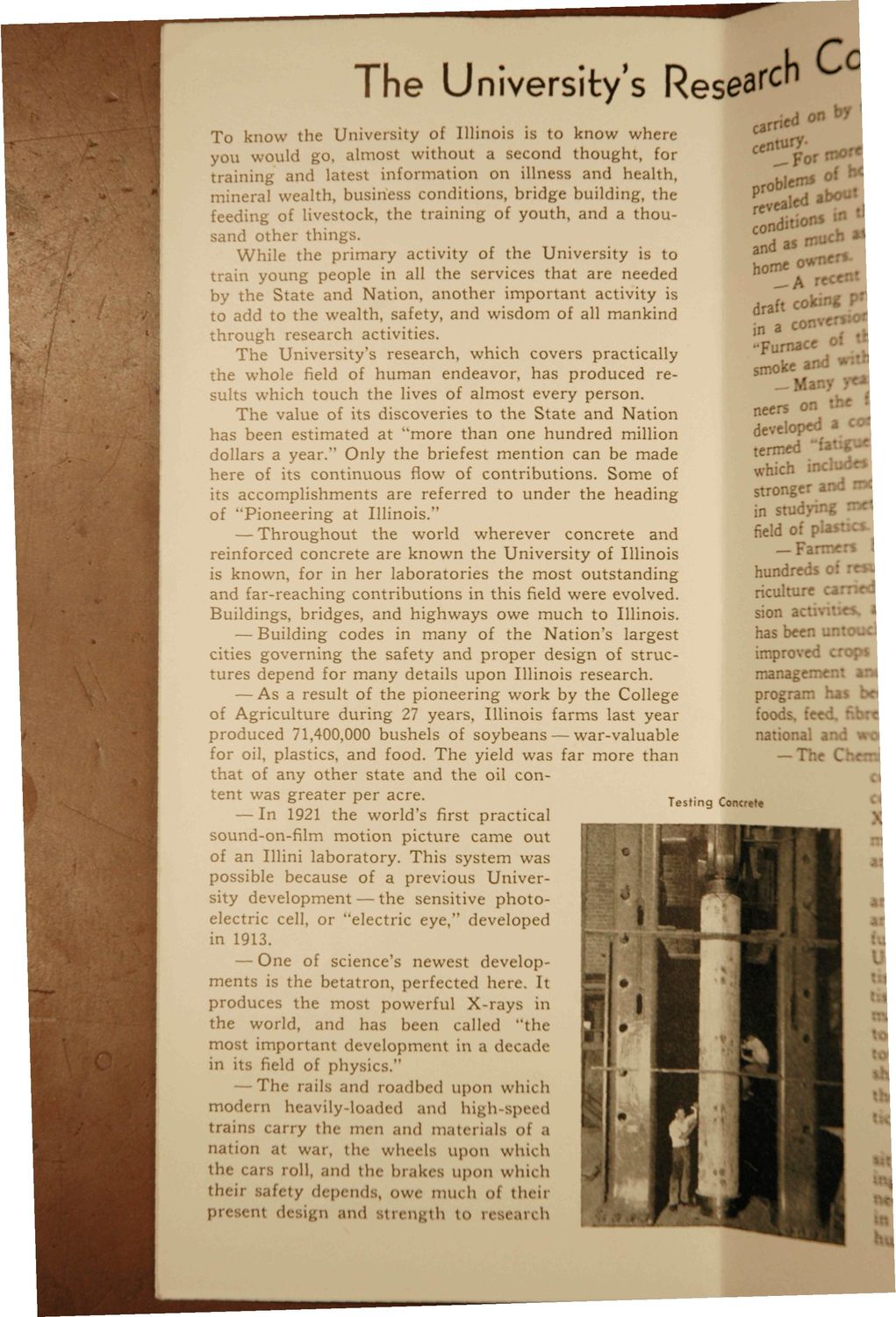| |
| |
Caption: Booklet - UI Informational Pamplet (1945)
This is a reduced-resolution page image for fast online browsing.

EXTRACTED TEXT FROM PAGE:
TheU mversity s Cc sea ^ e carr century d on bf To know the University of Illinois is to know when you would go, almost without a second thought, for training and latest information on illness and health, mineral wealth, business conditions, bridge building, th< feeding of livestock, the training of youth, and a thousand other things. While the primary activity of the University is to train young people in all the services that are needed by the State and Nation, another important activity is to add to the wealth, safety, and wisdom of all mankind hrough research activities. The University's research, which covers practically the whole field of human endeavor, has produced results which touch the lives of almost every person. The value of its discoveries to the State and Nation has been estimated at "more than one hundred million dollars a year." Only the briefest mention can be made here of its continuous flow of contributions. Some of its accomplishments are referred to under the heading of "Pioneering at Illinois." — T h r o u g h o u t the world wherever concrete and reinforced concrete are known the University of Illinois is known, for in her laboratories the most outstanding and far-reaching contributions in this field were evolved. Buildings, bridges, and highways owe much to Illinois. Building codes in many of the Nation's largest cities governing the safety and proper design of structures depend for many details upon Illinois research. As a result of the pioneering work by the College of Agriculture during 27 years, Illinois farms last year produced 71,400,000 bushels of soybeans — war-valuable for oil, plastics, and food. The yield was far more than that of any other state and the oil content was greater per acre. Testing — In 1921 the world's first practical sound-on-film motion picture came out of an Illini laboratory. This system was possible because of a previous University development — the sensitive photoelectric cell, or "electric eye," developed in 1913. One of science's newest developments is the betatron, perfected here. It produces the most powerful X-rays in the world, and has been called "the most important development in a decade per w&* ii condition ' nd as mucb * home own. ece _A draft colon* P* a conV in 73 Furnace PI *f smoke and * neers on oned • « • develo termed aUf bicb :ndude* strong* and mc in stud«* field of plastics — Farmer * hundreds o: riculture arried sion a has bee: tic* l -Ma improved crops management am program ha> foods, teed, f national and wo The C Concrete no a: A' u U in it field of physics." The rails and roadbed upon which modei n heavily-loaded and high-Speed trains carry the men and materials of 8 nation at war, the wheels upon which the cars roll, and the brakes upon which their safety depends, owe much of then pre-.cnt design and strength to research
| |